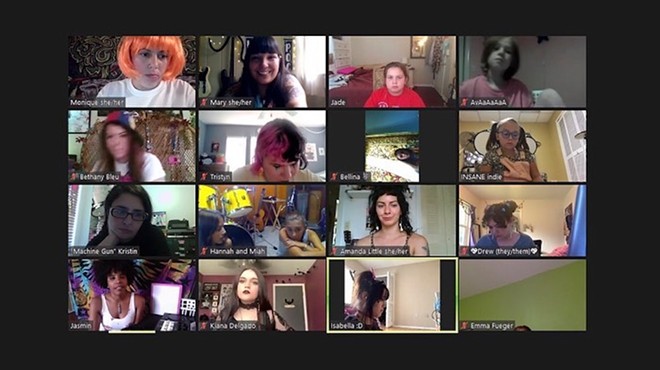Offices are reopening but many businesses will remain remote post-pandemic
A year ago, when the world began moving away from in-person interactions, many businesses quickly shifted to digital options that they had never fully considered before the pandemic. For many workers, working remotely has remained one of the few constants since then. A new study commissioned by video conference company Zoom found many offices don't expect their new way of operating to change much post-pandemic.
According to Zoom's report, video conference usage in the US among small to medium-sized businesses jumped from under 30 percent in 2019 to over 70 percent in 2020. They estimate that more than two million jobs were saved due to the ability to allowing remote work. The study found that roughly half of small to medium-sized businesses expect to continue video conferencing in 2022 and beyond. One in three expect remote work to remain in place into the future.
Healthcare, education, technology, and professional services sectors were reviewed in the study, with education reporting the largest increases in remote work and video conferencing during the pandemic. Within that sector, 81 percent of businesses surveyed believe video conferencing will remain “essential for business operations” post-pandemic.
Early in the pandemic, research from McKinsey and IBM’s U.S. retail index both found the move to digital-first options by consumers and businesses were roughly five years ahead of pre-pandemic expectations.
For some workers, the shift has been less than ideal. Younger workers and those with children at home both reporting difficulty in adjusting to remote work. Fifty-three percent of workers ages 18 to 29 say it has been difficult for them to stay motivated while working remotely, according to research done last year by Pew Research Center. For comparison, only 20 percent of those 50 years old and older reported the same. That same study found half of parents with children under age 18 difficulty working without interruptions.
Surprisingly, Pew Research Center found 60 percent of respondents reported a preference to work from home as a major reason for their remote work, compared to 57 percent who stated COVID-19 exposure concerns being a major reason. Pew also found that among remote workers who use video conferencing tools, 63 percent were fine with the amount of time they spend on digital presence tools.
That’s in stark contrast to the ‘Zoom fatigue’ narrative that is now gripping many industries. Some companies have implemented video conferencing-free days, and Microsoft is looking into virtual ‘commutes’ that give workers a set of bookends on their workday to better transition between work and home life. There’s also a push to improve virtual events, with convention hotels installing full production studios that can host hybrid and virtual events.
“We’re learning a great deal about videoconferences and meetings, holding large events online, holding parties online. We still suck at it, but we’re learning lots and getting better,” explained former president of the Electronic Frontier Foundation Brad Templeton, speaking with Pew Research Center on what the ‘new normal’ will look like post-COVID. “The video call was something that was going to be ‘the next thing’ since the 1950s. The pandemic made that finally happen, and it’s probably here to stay.”
Improved video conferences isn’t the only benefit coming out of the pandemic. There’s another silver lining to this past year, according to Templeton.
“It has been suggested that this is the first battle in our last war on disease – that, partly as a result of this, we will come to understand viruses at a fundamental level,” explained Templeton.
He believes that this understanding may eventually help to save millions of lives.
Experts believe another pandemic is a certainty. But unlike in 1918, this time we were able to capture large amounts of data on how best to respond when a health crisis occurs. Templeton remains optimistic that with this data, along with practice, via dry-runs and simulations, humanity will be far better prepared next time. He isn’t the only one who has found some positivity from this past year.
Craig Silliman, an executive vice president who spoke to Pew as part of the same project, explained that his employees had found deeper connections with each other thanks to their shift in working style.
“It turns out that it took forced distancing to bring out our most complete and authentic humanity. I believe that once we are together again physically, we will not forget what we learned while we were apart, and that will make for richer and deeper relationships for years to come,” he said.
–
Stay on top of Central Florida news and views with our weekly newsletters, and consider supporting this free publication. Our small but mighty team is working tirelessly to bring you Central Florida news, and every little bit helps.


